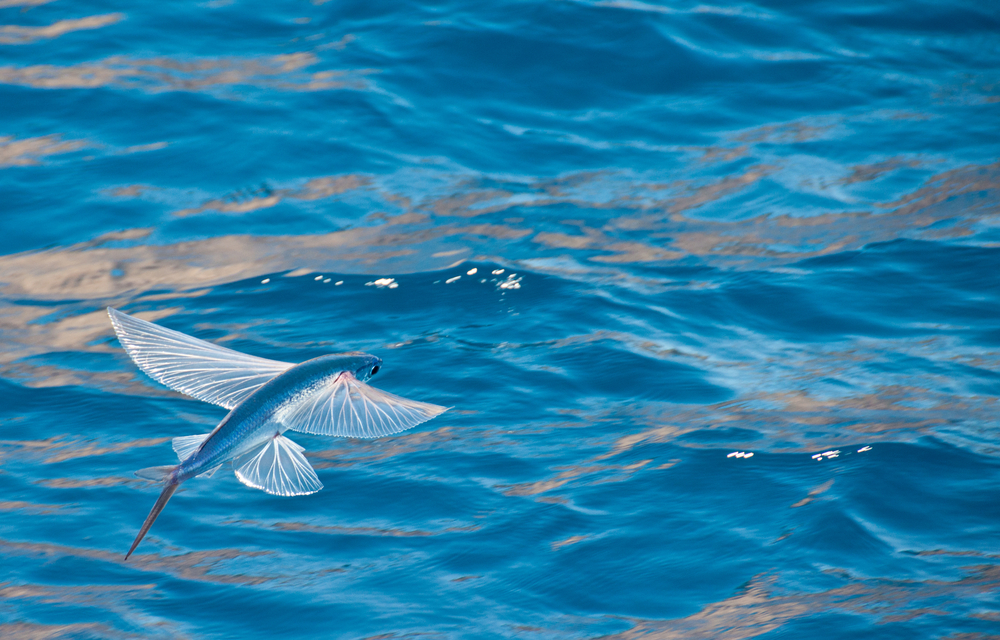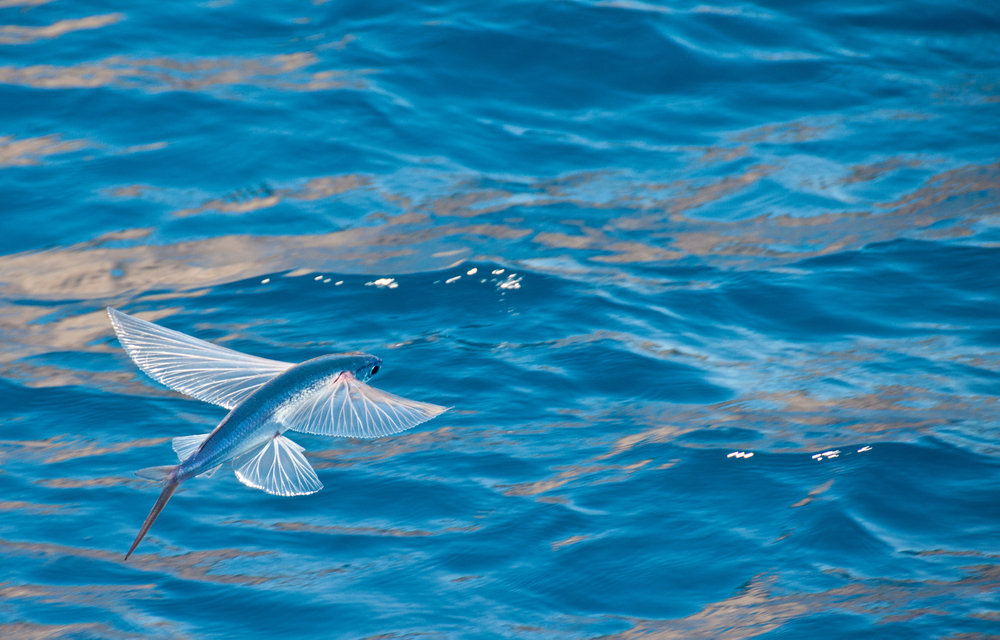
Flying fish belong to the family Exocoetidae, which means in Latin, “a fish that sleeps on the shore.” The family includes about 60 species of flying fish that live for about 5 years and use special ray-like fins underwater. They eat a modest diet of plankton and other small crustaceans.
You can see this look in pop culture: In the seventh level of the original Super Mario Bros., Mario has to go through a gauntlet of little red flying puffer fish called Cheep Cheeps. But in reality they float through the ocean waters.
Can fish fly?
(Credit: Shutterstock/Shane WP Wongperk)
Because flying fish don’t flap their fins like wings, they lack the propulsion needed to fly in the conventional sense. You can find flying fish in warm waters, in tropical and subtropical climates, where they are caught as a food source.
One method of fishing involves driving into the ocean with a bright light that attracts the fish. Many fish are attracted to the light with the promise of plankton and spring right out of the water to land in the boat.
How do flying fish fly?
The process of getting out of the water actually starts underwater. The fish swims quickly to the surface and reaches about 40 miles per hour. As it bursts through the surface, it does so at a certain angle designed to maximize lift with its fins, which act like wings.
They mostly fly to running away from predators such as mackerel, marlin, swordfish and tuna. As flying fish avoid predatory fish below and hungry waterfowl above, high-speed chases can occur frequently.
Read more: Meet the Mudskipper: The fish that walks on land
How far can the flying fish fly?
The flying fish can launch itself six feet into the air at a speed of about 35 miles per hour. From there, they can glide up to 650 feet above the water while trailing their rigid bodies, which act like airplane fuselages. To extend the flight, the fish can retract its fins, dive back into the water and repeat the process.
For a 2010 study, researchers caught flying fish, gutted them and stuffed them with foam, all before sticking them in a wind tunnel. The result? The fish exhibited excellent aerodynamics, equal to or better than that of hawks, wood ducks and insects. The study also found that the angle at which the fish burst into the water (in the wild) was the same angle that maximized lift in the lab.
How did the flying fish evolve?
A combination of genetic mutations and natural selection led to the flying fish’s torpedo-like body and ray-shaped fins, although such a combination may involve a simple mechanism, according to a 2022 study. It identified two genes that, in combination, appear to trigger the development on long flying fins.
In isolation, each seemed to produce a “clumsy fish”, According to Quanta Magazine.
Led by Matthew Harris, an associate professor of genetics at Harvard Medical School, the team examined the genomes of 35 species of flying fish, looking for areas that have changed rapidly under the pressure of evolution. They then tested the effects of the genes on baby zebrafish.
Read more: Fish can count, along with other animals

